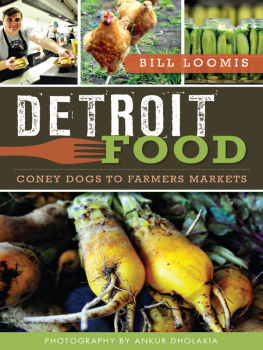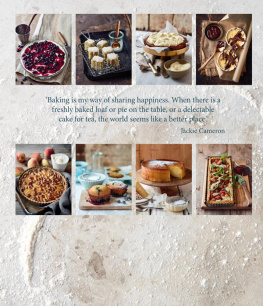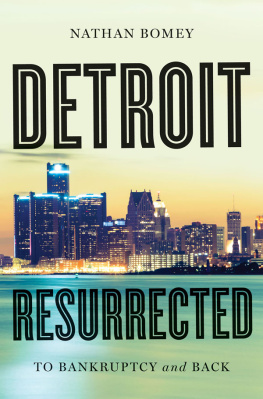Cameron - Seven Neighborhoods in Detroit: Recipes from the City
Here you can read online Cameron - Seven Neighborhoods in Detroit: Recipes from the City full text of the book (entire story) in english for free. Download pdf and epub, get meaning, cover and reviews about this ebook. year: 2015, publisher: Distributed via Smashwords, genre: Home and family. Description of the work, (preface) as well as reviews are available. Best literature library LitArk.com created for fans of good reading and offers a wide selection of genres:
Romance novel
Science fiction
Adventure
Detective
Science
History
Home and family
Prose
Art
Politics
Computer
Non-fiction
Religion
Business
Children
Humor
Choose a favorite category and find really read worthwhile books. Enjoy immersion in the world of imagination, feel the emotions of the characters or learn something new for yourself, make an fascinating discovery.
- Book:Seven Neighborhoods in Detroit: Recipes from the City
- Author:
- Publisher:Distributed via Smashwords
- Genre:
- Year:2015
- Rating:3 / 5
- Favourites:Add to favourites
- Your mark:
- 60
- 1
- 2
- 3
- 4
- 5
Seven Neighborhoods in Detroit: Recipes from the City: summary, description and annotation
We offer to read an annotation, description, summary or preface (depends on what the author of the book "Seven Neighborhoods in Detroit: Recipes from the City" wrote himself). If you haven't found the necessary information about the book — write in the comments, we will try to find it.
Seven Neighborhoods in Detroit: Recipes from the City — read online for free the complete book (whole text) full work
Below is the text of the book, divided by pages. System saving the place of the last page read, allows you to conveniently read the book "Seven Neighborhoods in Detroit: Recipes from the City" online for free, without having to search again every time where you left off. Put a bookmark, and you can go to the page where you finished reading at any time.
Font size:
Interval:
Bookmark:
Copyright 2015 by
Photography 2015 by J.N. Cameron
This ebook is licensed for your personal enjoyment only. It may not be re-sold or given away to other person. If you would like to share this book with another person, please purchase an additional copy for each person you'd like to share it with. Thank you for respecting the work of this author.
All rights reserved. No part of this publication may be reproduced, distributed, or transmitted in any form or by any means, including photocopying, recording, or other electronic or mechanical methods, without the prior written permission of the publisher, except in the case of brief quotations embodied in critical reviews and certain other noncommercial uses permitted by copyright law. For permission requests, write to the publisher, addressed Attention: Permissions Coordinator, at the publishers website.
www.benevapublishing.com
www.detroitrecipes.com
This book is dedicated to my family in Michigan, my supportive husband, andhomesick Detroiters everywhere without them this bookwouldn't have been possible.
This cookbook takes a nostalgic look at Detroit's most iconic dishes. It's people and local agriculture set the foundation from which these foods emerged. With popular dishes that range from baklava to pierogi, the influence of its first residents is undeniable. But as any city evolves, so does its cuisine. Most ingredients are globally available and today recipes are developed without geographic limitations. This well-timed collection captures significant moments in food history and the cities most remarkable dishes to date.
By 1925, nearly half of Detroit's population was born outside of the United States.[1] Many spoke the universal language of food to make their new surroundings work. Some shared the meals of their homeland, often altering recipes to suite local tastes, or because traditional ingredients were unavailable. Others put their own spin on classic dishes or created new ones. Each chapter tells the story of one neighborhood. And while some communities still thrive, others can only live on through stories...and their most celebrated dishes.
Recipes range from popular international dishes to genuine Detroit originals. They're simplified when possible so that cooks at any skill level can enjoy this book. Each recipe attempts to capture the specific essence of a dish, but feel free to modify any recipe to suit your tastes and dietary preferences.
Michigan is abundant with livestock and agriculture. With more than eleven-thousand inland lakes (not to mention thirty six thousand miles of rivers and streams), the state is teaming with freshwater fish too. The following section illustrates a range of ingredients that are typical of the region. They are either Michigan-produced on a large scale or imported due to high-demand
Detroit was built on innovation. For self-starters with open-minds and a do-it-yourself mindset, even today the area offers endless opportunity. Its emerging food scene of artisan cheese makers, bakers, chefs, barbecue pit masters, and craft brewers, illustrates the true spirit of the city.
**Great Lakes Wild Rice
Wild Rice is important to many tribal communities and is part of an ancient prophesy that brought the Ojibwa, Pottawatomi, and Odawa people to the region. The rice, called Manoomin in the Ojibwe culture, grows on water and is still hand-harvested by canoe. At one time, vast rice beds grew along the shorelines and streams. But invasive plants and human impact have caused a serious decline in growth. The threatened species is tremendously important to the biodiversity of Michigan's waters.[2]
1 Arthur M Woodford, "A City of ManyTongues," In This Is Detroit, 1701-2001, (Detroit:Wayne State University Press, 2001), 186.
2 "NativeWild Rice Coalition," Native Wild Rice, (accessed September 28, 2015); available from http://www.nativewildricecoalition.com/native-wild-rice-coalition.html.
Chapter 1
Font size:
Interval:
Bookmark:
Similar books «Seven Neighborhoods in Detroit: Recipes from the City»
Look at similar books to Seven Neighborhoods in Detroit: Recipes from the City. We have selected literature similar in name and meaning in the hope of providing readers with more options to find new, interesting, not yet read works.
Discussion, reviews of the book Seven Neighborhoods in Detroit: Recipes from the City and just readers' own opinions. Leave your comments, write what you think about the work, its meaning or the main characters. Specify what exactly you liked and what you didn't like, and why you think so.


















